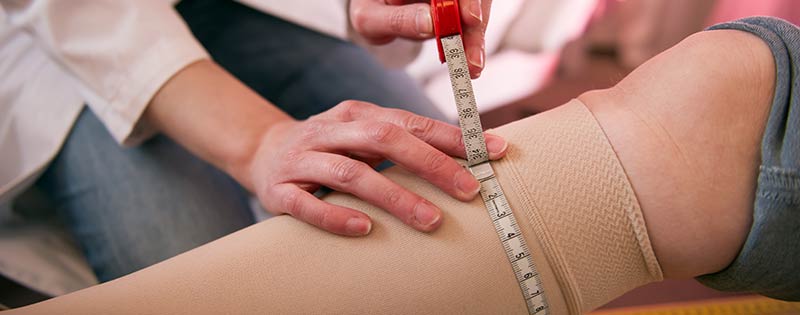by Brent Hearn •
Compression socks. Compression stockings. TED hose. With the variety of compression garments available, it can be tough to keep them straight. And now that compression gear has moved into the realm of sports apparel, you’re just as likely to see it in the athletic wear section as you are in your local pharmacy.
Should you be using compression garments? Let’s take a look at some of the more common compression aids and their purposes. (Though there are compression garments available for the upper body, we’ll be focusing solely on the lower body.)
What Does Compression Do?
Generally speaking, compression garments exert more pressure on the body than typical socks or hosiery. The idea is to squeeze (but not too much) the legs and ankles to promote better blood circulation. There are a number of conditions that can benefit from increased circulation and a variety of compression garments available to treat them.
Anti-Embolism Stockings
Thromboembolic deterrent (TED) hose, also known as anti-embolism stockings, are prescribed to post-operative patients or others who aren’t able to move around. For these patients, compression is vital. Without proper circulation, blood can pool in the legs, which increases the risk of clots that can pose a serious health risk.
Compression Socks/Stockings
Compression socks differ from TED hose in that they’re intended for those who are mobile. They can help to treat swelling in the legs, varicose veins, and a variety of other issues. In addition, they can assist in the prevention of orthostatic hypotension, venous ulcers, and venous hypertension.
Graduated compression stockings offer the highest level of compression at the ankle, with the pressure applied gradually decreasing toward the top of the stocking. Different lengths—with the stockings ending either below the knee or extending to the thigh or waist—offer different benefits. There are multiple grades of compression available, some of which require a prescription. Graduated compression stockings usually require a professional fit.
Nonmedical Support Hosiery
Nonmedical support hosiery offers less compression than graduated compression stockings, and the compression is uniform. If you suffer aching legs from being on your feet a lot or discomfort during flights, this is an option you might want to consider.
Wearing any kind of compression garment can take some getting used to, and some wearers worry that the compression itself can cut off their circulation. According to Georgeanna Botek, DPM of the Cleveland Clinic, however, there’s typically little cause for concern.
“For 99% of people, that’s just not the case,” says Botek. “The only place issues might crop up is for unhealthy individuals who have severe reduction of their heart function or they have a severe peripheral arterial disease where they have poor blood flow between either the feet or legs and the heart.”
If you have questions about compression or are concerned whether you have a condition that could be negatively impacted by it, you should discuss it with your physician.
Sources:
https://www.healthline.com/health/compression-socks-benefits
https://health.clevelandclinic.org/what-you-should-know-about-compression-socks/
https://hillcrestsouth.com/news/when-should-you-wear-ted-hose-or-compression-socks









 ▶︎
▶︎  Why is the Discount Challenge prize amount $15,024? Because that is the average “per-occurrence” fine for Medicare inducements. That’s not $15,024 per patient, that’s not per provider, that’s PER VISIT. Stinks, doesn’t it? To us, the prize amount is worth the investment if we can help our profession better understand proper discounting.
Why is the Discount Challenge prize amount $15,024? Because that is the average “per-occurrence” fine for Medicare inducements. That’s not $15,024 per patient, that’s not per provider, that’s PER VISIT. Stinks, doesn’t it? To us, the prize amount is worth the investment if we can help our profession better understand proper discounting.